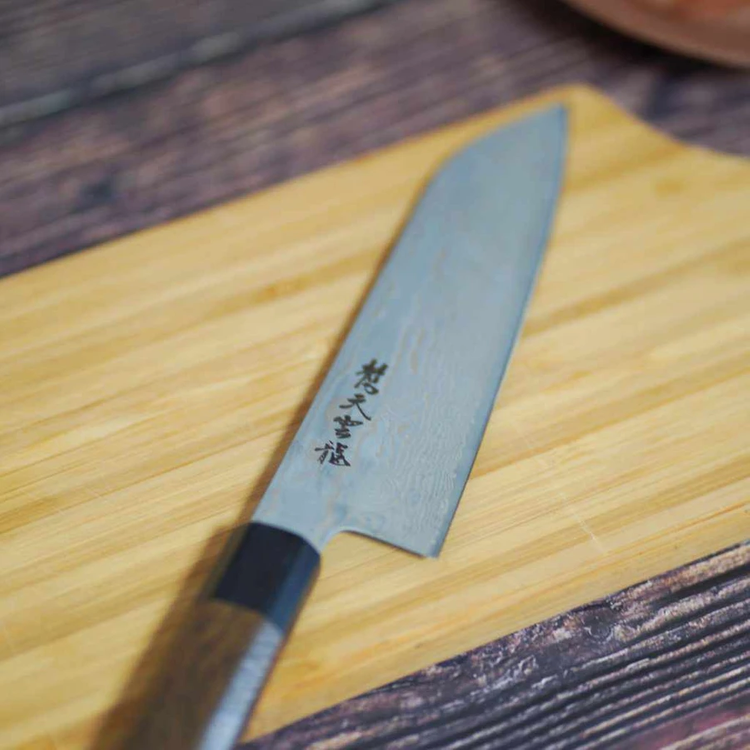Echizen Uchihamono are one of the most well-known traditional blades in all of Japan, hailing from Fukui Prefecture in the Hokuriku region of Japan. Even today, they’re still made by hand using long-established methods, and include everything from knives (kitchen or otherwise) to sickles, billhooks, and many more. The blades’ amazing sharpness has made many people into diehard fans of the Echizen Uchihamono not just in Japan, but all over the world.
What Is Echizen Uchihamono?

It’s been said that the history of Echizen Uchihamono started in 1337 when a Kyoto swordsmith by the name of Kuniyasu Chiyozuru moved to Fuchu (present-day city of Echizen) while searching for the perfect place to master his craft, and started making sickles for the local farmers.
The craft underwent further developments during the Edo Period (1603 – 1868) due to the protective policies that the Fukui Domain (present-day Fukui Prefecture) had in place. Eventually, it gained nationwide recognition thanks to the many lacquer tappers in Fukui who would travel the country to collect resin and, while doing so, sell Echizen Uchihamono goods. Modern-day Echizen Uchihamono goods are still made with the same methods developed over the last 700 years like using traditional fire forges or finishing everything by hand, and include knives (kitchen or otherwise), farming and gardening sickles, billhooks, shears, and hoes.
In 1979, Echizen was designated by the Ministry of Economy, Trade and Industry as the first traditional Japanese craft in the blade field.
Related articles:
▶ 8 Things You Didn’t Know About Japanese Kitchen Knives
▶ The Complete Guide to Traditional Japanese Crafts
Characteristics of Echizen Uchihamono


The knives, sickles, billhooks, and other blades produced in Echizen can be broadly divided into single-bevel and dual-bevel types. The former is made by forge welding steel layered onto soft iron, while the latter is made by sandwiching the steel between soft iron and hammering all of it together. Both types serve different purposes.
Also, while some production areas have started turning towards mechanization, Echizen Uchihamono are recognized for being made in traditional fire forges and being finished by hand by skilled craftspeople.
Unique Echizen Uchihamono Forging Techniques
Nimai Hiroge (Kitchen Knives)

This unique technique requires the craftsperson to create a groove in the soft iron, insert steel into it, and then forge weld it all together to form a layered plate. Then, they stack two layered plates atop of each other and hammer them flat. Hammering both the front and the back of the knife at the same time makes the forging process a lot quicker. Since the thickness of the blade has been doubled from the layering, a belt hammer is required, which altogether prevents the knife from getting too hot and consequently developing unevenness.
Mawashi Haganetsuke (Sickles, Shears)

Legend goes that this forging method was invented by the swordsmith Kuniyasu Chiyozuru after he moved to Fuchu. Called the "masaoki method," it’s when soft iron and steel are forge welded, after which the craftsperson hammers the steel into a diamond shape, starting from one corner and continuing on from there. This results in incredibly thin, high-quality steel that’s easy to sharpen. When compared to the more common "hiraoki method," this unique Echizen Uchihamono forging technique requires significantly more skill and dexterity, but also results in a much finer product.
Featured Products
Brahma Ryuwa Santoku Knife 175 mm | Echizen Forged Blades


An all-purpose santoku kitchen knife whose ease of use makes it stand out even among the acclaimed Bonten Unryu series, characterized by the non-glossy finish on the blade’s ripple patterns (see the second knife from the right in the 2nd picture). The knife is forged from 63 folded layers of high-quality steel enclosed by Nickel Damascus steel. There are no two knives with the same ripple effect on the blades, proving that each one is made individually by hand by experienced artisans.
The knife is easy to sharpen and maintain, making it great for everyday use. Both pros and amateurs can appreciate the fineness of this product.
Related articles:
▶ 7 Japanese Knives That Every Fan of Cooking Should Know About
▶ Top 5 Japanese Knives for Chefs
Parquet Knife Sk06 Checkered 100 mm | Echizen Forged Blades


The result of a collaboration between traditional Japanese craftspeople, this knife sports a modern finish and a handle featuring a Hakone Yosegi Zaiku marquetry design*, a Ministry of Economy, Trade and Industry-designated traditional Japanese craft from the famous onsen city of Hakone in Kanagawa Prefecture (located southwest of Tokyo). Thanks to its compact size, the knife can be used for any and all occasions.
These knives are made from the super high-quality cutlery steel known as “Super Gold II,” which boasts high levels of hardness, durability, abrasion resistance, and corrosion resistance, allowing the blades to stay sharp for longer.
*Hakone Yosegi Zaiku: A kind of traditional Japanese marquetry that uses different-colored wood combined into beautiful running patterns. No dyes or paints are used in the process; only natural wood. It is praised for its outstanding designs.
Letter Opener Ricorne Lr01 With Ebony Genuine Leather Case | Echizen Forged Blades


This stand-type letter opener is a concentration of the fine artisan skills that go into traditional Echizen Uchihamono. It may have an unusual shape, but this allows it to easily open envelopes in one stress-free stroke.
The handle is ebony and as elegantly simple as the included cowhide cover. The more you use it, the more you come to appreciate this letter opener, making it the perfect gift for a special occasion or perhaps for that special someone.
If you want to give feedback on any of our articles, you have an idea that you'd really like to see come to life, or you just have a question on Japan, hit us up on our Facebook, Twitter, or Instagram!
*These products may not be able to be shipped to certain countries. Please see the retailer's website for more information.
The information in this article is accurate at the time of publication.
